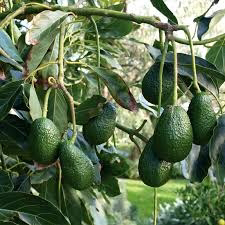We are Bwebajja Fruit Tree Nursery and we continue sharing great info on fruit farming.
In this communication, I want to take a moment to explore the immense importance of fruit farming, not only for the farmers themselves but also for society and the environment. It’s a venture that goes far beyond the orchard gates, and we’re here to show you why.Fruit farming isn’t just a profession; it’s a way of life.
For many farmers, it’s a labor of love passed down through generations. Imagine tending to lush apple orchards, nurturing vibrant citrus groves, or cultivating juicy berry patches. These are not just crops; they’re legacies.
Fruit farming provides livelihoods, sustenance, and a sense of purpose to countless individuals and families.Fruits are nature’s gift to human health. They’re rich in essential vitamins, antioxidants, and fiber. Consider the humble apple, a staple in households across the globe. It’s not just a delicious snack; it’s a symbol of good health. Or think about the tropical mango, bursting with flavor and nutrients. These fruits are the cornerstone of a balanced diet, contributing to better health, improved immunity, and reduced healthcare costs.Fruit farmers are also stewards of the environment. Orchards provide habitats for beneficial insects and wildlife, fostering biodiversity. Responsible farming practices, like organic cultivation and sustainable water management, minimize harm to ecosystems. By planting trees, fruit farmers help combat climate change by absorbing carbon dioxide and releasing oxygen into the atmosphere.Now how do you start your fruit OrchardIf you’re considering starting your own orchard, you’re on the right path to making a positive impact.
Here’s a simplified guide to get you started:
1- Choose Your Fruits – Decide on the types of fruits you want to grow. Consider factors like climate, soil, and market demand. Apples, pears, cherries, and strawberries are excellent choices for beginners.
2- Select a Suitable Location – Ensure your chosen location receives adequate sunlight and has well-draining soil. Conduct a soil test to assess its fertility and pH.
3- Prepare the Soil – Prepare the soil by adding organic matter and nutrients as needed. This will provide a healthy foundation for your fruit trees.
4- Choose Healthy Trees – Purchase disease-resistant and high-quality fruit tree saplings from reputable nurseries.
5- Plant Carefully – Follow planting guidelines for your specific fruit trees. Pay attention to spacing, depth, and proper care after planting.
6- Manage Pests and Diseases – Implement pest and disease management strategies, which may include organic methods, to protect your orchard.
7- Regular Pruning and Maintenance – Prune your trees annually to encourage healthy growth and maximize fruit production.
8- Harvest with Care – Learn when to harvest your fruits for optimal flavor and ripeness.Remember, fruit farming is both an art and a science. It takes time to become an expert, but the rewards are immeasurable. In our upcoming posts, we’ll delve deeper into the intricacies of fruit farming, offering guidance, tips, and insights to help you succeed.
Thank you for joining us on this exciting journey toward a greener, healthier, and more vibrant world. If you have any questions or need assistance, don’t hesitate to reach out.
We’re here to support you every step of the way.
Best regards,
Daniel Alifaki C.E.O – Bwebajja Fruit Tree Nursery


Comments
Post a Comment